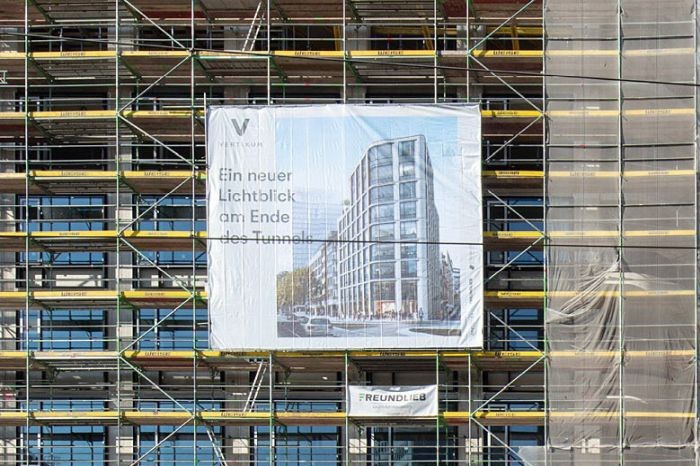Veil and Promise
The visual representation of buildings and urban spaces is one of the most important forms of communication in (contemporary) architecture. The images show the buildings in their urban context or in the landscape, the internal spaces, surface finishes and furnishings.
In the urban space these visualisations are often used for advertising purposes by the real estate sector, mainly for housing and office buildings. They decorate construction site fences and billboards, are presented as large-scale advertisements at crossings and on motorways. The visualisations promise the “most attractive apartment” or the “ideal urban district”. They portray happy people, lots of green and trees, fountains, children playing and elderly people relaxing.
The exhibition Veil and Promise focusses on the phenomenon of real estate advertising in urban space. Here, evocative names and seductive visualisations on the advertising billboards present the emerging construction projects as the private living space of our dreams. This contrasts sharply with the situation of housing shortage combined with rising rent and real estate prices currently so widely discussed. Terms such as "the sell-out of cities" and “concrete gold” demonstrate how, through the desire for the best return on investment, new build projects emerging around the world are increasingly contributing to the “inhospitability of cities”, which Alexander Mitscherlich described as early as 1965 in his book of the same name.
The installation shows work by architecture photographer Hans-Georg Esch, who documented real estate advertisements on his travels around the world. The images are juxtaposed with text passages from the 2015 article in the Architectural Review by Reinier de Graaf in which he wrote ‘Architecture is now a tool of capital, complicit in a purpose antithetical to its social mission’. Rosa Nussbaum’s visual analyses of the posters provide an insight into the real estate industry’s stylistic devices for producing ideal illusions.
